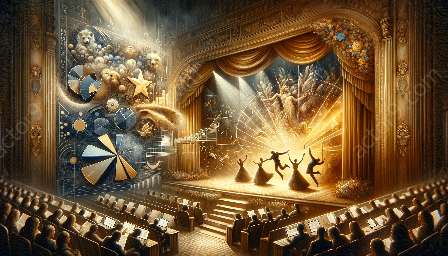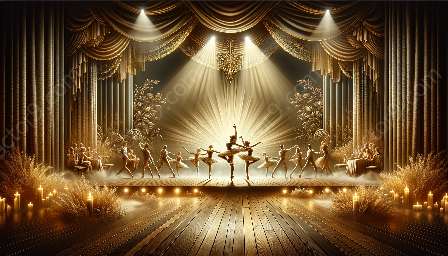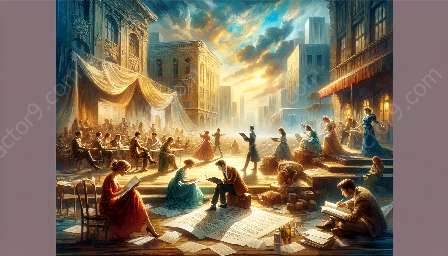Broadway choreography is an essential element of musical theater, adding depth and emotion to storytelling through dance and movement. This topic cluster explores the history, techniques, and significance of choreography on Broadway, and how it intersects with musical theater and the performing arts.
History of Broadway Choreography
The history of Broadway choreography dates back to the early 20th century, with pioneers like Agnes de Mille and Bob Fosse revolutionizing the art form. De Mille's work on Oklahoma! in 1943 marked a significant shift, as she integrated dance into the narrative, creating a seamless blend of storytelling and choreography. Fosse, known for his distinctive style characterized by isolated movements and precise gestures, left an indelible mark on Broadway with iconic works such as Chicago and Sweet Charity.
Techniques and Styles
Broadway choreography encompasses a diverse range of techniques and styles, from classical ballet to jazz and contemporary dance. Choreographers often draw inspiration from the narrative and music of a production, tailoring their movements to evoke specific emotions and enhance character development. The use of ensemble choreography and intricate partner work adds depth and visual appeal to Broadway performances, captivating audiences with its energy and precision.
Significance in Musical Theater
Choreography plays a pivotal role in the success of musical theater productions, contributing to the overall spectacle and emotional impact of a show. Through carefully crafted movements and dance sequences, choreographers bring the characters and story to life, heightening the audience's engagement and creating memorable moments that resonate long after the curtain falls.
Intersection with Performing Arts
Broadway choreography intersects with the broader world of performing arts, incorporating elements of acting and theater into its dynamic movement vocabulary. Dancers who specialize in Broadway choreography must possess strong acting skills, as they are often required to convey emotion and character through their movements. Additionally, the collaborative nature of choreographing for Broadway involves working closely with directors, performers, and designers to ensure a cohesive and impactful production.
From its rich history to its profound impact on musical theater and the performing arts, Broadway choreography continues to captivate audiences worldwide with its artistry and storytelling prowess.
Topic
Challenges and Opportunities for Broadway Choreographers
View details
Innovation in Contemporary Broadway Choreography
View details
Psychological and Emotional Aspects of Broadway Dance
View details
Spatial Dynamics and Staging in Broadway Choreography
View details
Professional Development for Aspiring Choreographers
View details
Preserving Cultural Heritage in Musical Theater
View details
Collaborations between Choreographers and Composers
View details
Safety and Well-being of Performers in Broadway Dance
View details
Balance of Innovation and Tradition in Choreography
View details
Spectacle and Entertainment Value in Broadway Dance
View details
Training and Skills for Broadway Choreographers
View details
Influence of Choreography on the Success of a Broadway Show
View details
Differences in Choreographic Styles in Broadway
View details
Choreographic Adaptations for Musicals vs. Plays
View details
Dance, Singing, and Acting in Broadway Performances
View details
Differences between Broadway Choreography and Other Dance Styles
View details
Fundamental Principles of Broadway Choreography
View details
Current Trends and Innovations in Broadway Dance
View details
The Role of Choreography in Storytelling in Musical Theater
View details
Aspiring Choreographers in the Broadway Industry
View details
Questions
What are the fundamental principles of broadway choreography?
View details
How does broadway choreography differ from other dance styles?
View details
What are the key elements of successful broadway choreography?
View details
How has broadway choreography evolved throughout history?
View details
What role does choreography play in the success of a broadway production?
View details
How do choreographers approach the creative process for a broadway show?
View details
What are some iconic examples of broadway choreography?
View details
What are the challenges of combining singing, acting, and dancing in broadway performances?
View details
How do performers prepare for the physical demands of broadway choreography?
View details
What are the differences between choreographing for a musical versus a traditional play?
View details
What impact does choreography have on the overall storytelling in a production?
View details
How do choreographers collaborate with directors and designers in a broadway show?
View details
What training and skills are essential for aspiring broadway choreographers?
View details
How does cultural diversity influence broadway choreography?
View details
What are the current trends and innovations in broadway choreography?
View details
How does the choreography enhance character development in a musical?
View details
What are the specific challenges of choreographing big ensemble numbers for broadway productions?
View details
What are the common misconceptions about broadway choreography?
View details
How do choreographers ensure the safety and well-being of performers during intense dance sequences?
View details
How do choreographers use movement to convey emotion and narrative in musical theater?
View details
What are the ethical considerations in choreography related to cultural appropriation?
View details
How has technology influenced the staging and choreography in modern broadway shows?
View details
What are the differences in choreographic styles between classic and contemporary broadway productions?
View details
How does choreography contribute to the overall spectacle and entertainment value of a musical?
View details
What are some notable collaborations between choreographers and composers in broadway history?
View details
How do choreographers adapt choreography to accommodate performers with diverse abilities?
View details
What are the characteristics of successful broadway choreographers?
View details
How do choreographers balance innovation and tradition in their work?
View details
What are the psychological and emotional aspects of being a professional dancer in broadway productions?
View details
How do choreographers use spatial dynamics and staging to create visually stunning dance sequences?
View details
What opportunities are available for aspiring choreographers in the broadway industry?
View details
How does gender and identity influence the choreographic choices in musical theater?
View details
What role does choreography play in preserving the cultural heritage of musical theater?
View details



































